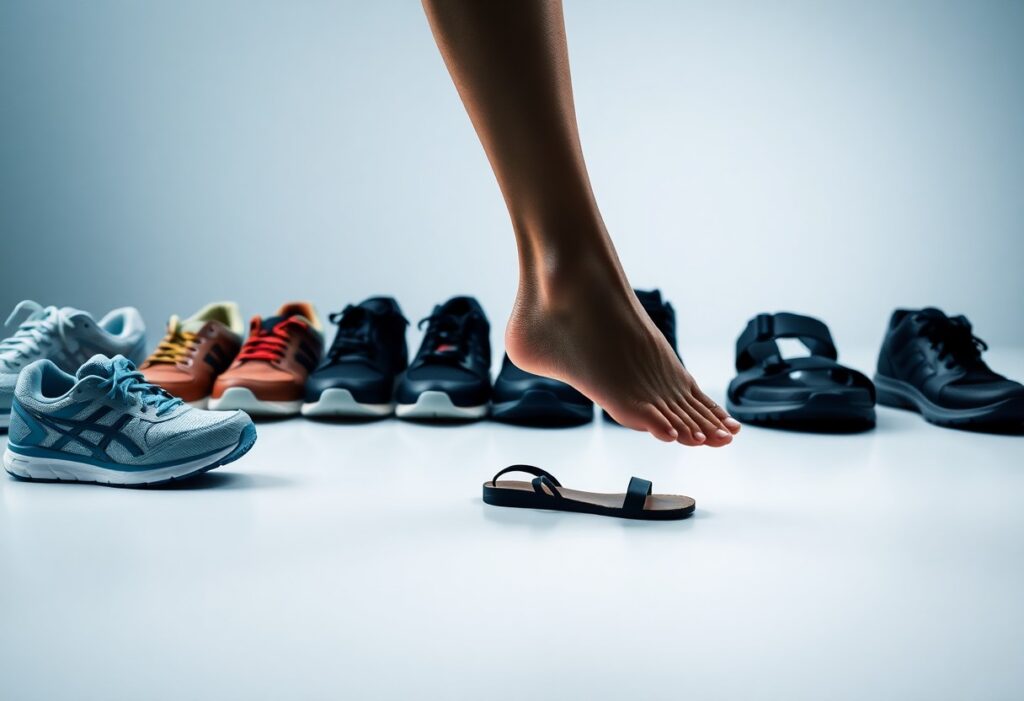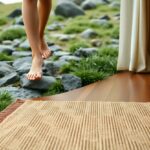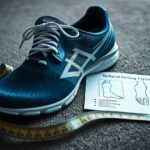
As you walk, the type of footwear you select can either greatly improve or negatively impact your foot health. Many people mistakenly think that shoes with enhanced cushioning and support are the best remedy for foot pain; however, conventional shoes frequently cause more issues than they solve. According to Dr. Alissa Kuizinas, a podiatrist based in Massachusetts, choosing barefoot shoes or minimalistic footwear can promote stronger and healthier feet. By opting for footwear that allows your feet to function naturally, you can significantly reduce the chances of developing foot problems and improve your overall foot wellness.
Uncovering the Hidden Dangers of Conventional Footwear
Conventional shoes might seem to offer temporary comfort for foot pain, but they often exacerbate existing issues and introduce new complications, as highlighted by Dr. Alissa Kuizinas. She points out that the $133 billion shoe industry tends to prioritize style and profit over genuine foot health, resulting in designs that can restrict and weaken your feet over time. This dependency on traditional footwear can create a vicious cycle, ultimately compromising your foot health.
Evaluating How the Shoe Industry Misunderstands Foot Health
The root of this issue lies in the shoe industry’s flawed approach to addressing foot health, which often emphasizes excessive cushioning, support, and rigid construction in footwear without addressing the real causes of discomfort. This misguided strategy can foster a habitual reliance on shoes that may actually harm your foot health over time, resulting in various complications that could have been prevented.
Recognizing the Design Flaws of Traditional Shoes
Traditional shoe designs typically incorporate narrow toe boxes, stiff soles, and excessive cushioning that can impede natural foot movement, leading to weak and dysfunctional feet. Dr. Kuizinas asserts that footwear should protect your feet from external elements, rather than limit their natural movement. Ideally, a well-constructed shoe should emphasize natural foot function and minimalist features, including wide toe boxes, flexible and flat soles, and minimal cushioning to support foot health.
By adopting barefoot shoes or minimalistic footwear, you can actively fortify your feet and boost your overall foot wellness. Dr. Kuizinas promotes a philosophy of using as little shoe as possible, allowing your feet to function naturally and move freely, which is essential for maintaining healthy foot mechanics.
The Essential Importance of Natural Foot Mobility
Footwear that restricts your foot's capacity to move freely can lead to numerous foot issues and discomfort. It is critical to assess how your shoe choices influence your overall foot health and comfort levels.
Examining the Footwear's Impact on Foot Mobility
To fully understand how shoes affect your foot's ability to move, it's vital to analyze the specific design and characteristics of your footwear. Traditional shoes often contain cushioning and support features that can actually hinder your foot's natural movement, resulting in weak and inefficient feet over time. Such limitations can obstruct your feet from developing the strength and flexibility they need.
Harnessing the Benefits of Natural Foot Movement
The benefits of allowing your feet to move freely are extensive, as strong feet are vital to overall foot health. By choosing minimalistic shoes or barefoot options, you enable your feet to perform naturally, fostering strength and resilience.
Movement is crucial for building strong feet. When confined by conventional footwear, you risk developing various foot problems and discomfort. In contrast, embracing minimalistic shoes or barefoot alternatives can significantly improve your foot health by allowing natural movement and strengthening. By selecting the appropriate footwear, you can reduce your risk of developing foot issues while enhancing your overall foot wellness.
Delving into the Concept of Functional Footwear
Understanding functional footwear is essential, as these shoes emphasize both foot health and unrestricted movement. Functional shoes are specifically crafted to enable your feet to operate as designed, eliminating the necessity for excessive support or confinement.
Defining Functional Shoes and Their Key Features
After researching and testing various shoe styles, you’ll find that functional footwear has defining characteristics, such as a wide toe box, flat and flexible soles, along with minimal cushioning and support. These features empower your feet to move freely and naturally, promoting stronger and more efficient foot mechanics.
Enhancing Foot Health with Functional Footwear
Wearing functional shoes offers numerous advantages, including improved foot strength, reduced injury risk, and enhanced overall foot health. These shoes allow your feet to function as intended, paving the way for stronger feet and better balance in your daily activities.
Essentially, functional footwear is designed to support your feet without imposing unnecessary restrictions, allowing them to move and flex naturally. This design philosophy fosters optimal foot health and lessens the likelihood of developing foot ailments. By selecting functional shoes such as barefoot shoes or minimalistic options, you actively promote healthy foot function and reduce the risk of foot pain and injury. Transitioning to functional footwear may require time and gradual adjustment, but the long-term benefits for your foot health are significant.
Essential Features to Look for in Functional Footwear
To ensure optimal foot health, it’s important to seek shoes that come with specific features. Key attributes to consider include:
- Wide toe box
- Flat and flexible soles
- Minimal cushioning and support
Being aware of these characteristics will greatly assist you in choosing shoes that promote healthy foot function and support.
Understanding the Significance of Wide Toe Boxes and Flexible Soles
A crucial aspect of functional shoes is a wide toe box, which allows your toes to spread naturally. This design helps avoid toe jamming and other discomfort-related issues that could result in chronic foot pain.
Recognizing the Importance of Minimal Cushioning and Support
In addition to a wide toe box, functional shoes should also incorporate minimal cushioning and support. This design feature enables your feet to move naturally while strengthening foot muscles, thereby reducing the risk of foot issues.
It's important to emphasize that minimalistic footwear, including barefoot shoes, can significantly enhance your foot health by allowing your feet to function freely. By opting for shoes with reduced cushioning and support, you can improve muscle strength in your feet and lower the chances of injuries. This thoughtful approach not only enhances your overall foot health but also minimizes the likelihood of experiencing chronic pain. Therefore, it’s wise to focus on footwear that allows your feet to move naturally without excessive cushioning or support.
Steps to Transitioning to Functional Footwear
Having acknowledged the significance of functional footwear, it’s time to begin your transition. Contrary to popular belief that more cushioning and support translates to better comfort, you should opt for minimalistic shoes or barefoot shoes that facilitate your feet's natural functioning.
Effective Tips for Making the Switch to Functional Footwear
Despite any hesitations, start incorporating functional shoes into your daily routine with these practical suggestions:
- Begin with short walks and gradually increase the distance
- Choose shoes that feature a wide toe box and flat soles
- Select minimal cushioning and support
The key is to give your feet time to adapt to the new shoes while strengthening the muscles in your feet.
Highlighting the Importance of Patience and Gradual Adjustment
Transitioning to functional footwear requires patience and a gradual approach. Shoes that are overly minimalist can cause discomfort and pain if your feet aren’t accustomed to them. Starting slowly is essential, allowing your feet to become accustomed to the new footwear.
Footwear choices like barefoot shoes or minimalistic shoes can greatly benefit your foot health, but it’s vital to introduce them gradually. Overuse or improper sizing can result in injuries or persistent discomfort. The ultimate objective is to strengthen your foot muscles while enhancing your overall foot health, so exercise patience and avoid rushing the process. The benefits will be significant; anticipate experiencing improved balance, reduced pain, and stronger feet.
Cultivating Strong and Functional Feet
Even in a society where shoes with excessive cushioning and support are commonplace, it is possible to foster strong and functional feet by selecting the right footwear.
Understanding the Significance of Foot Strength on Overall Health
Alongside various health factors, foot strength is pivotal to your overall well-being, affecting your balance, posture, and movement capabilities.
How Functional Footwear Promotes Strong Feet
Functionally designed shoes that feature a wide toe box, flat and flexible soles, and minimal cushioning are vital in developing strong feet, as they allow for natural movement.
Indeed, wearing functional shoes or barefoot shoes can greatly assist in building stronger foot muscles and enhancing your overall foot health. By allowing your feet the freedom to move and operate naturally, you can reduce the likelihood of foot problems and improve your balance and stability. As you transition to minimalistic shoes, you should expect to notice enhancements in your walking technique and overall sense of well-being.
By taking control of your foot health, you can choose shoes that support your feet's natural functions rather than impede them. Opting for barefoot shoes or minimalistic options that enable your feet to function naturally will promote strength development over time. This approach will result in increased stability and comfort during activities, giving your feet the chance to become strong and capable. Begin your journey by searching for shoes with a wide toe box, flat and flexible soles, and minimal cushioning and support, and practice patience as you adjust to a more natural walking style.
The Article A Podiatrist’s Guide to How Shoes Affect Your Foot Health appeared first on My Shoes Finder
The Article How Shoes Impact Your Foot Health: A Podiatrist’s Insights Was Found On https://limitsofstrategy.com







I really resonate with what you’ve shared about footwear and foot health. It’s surprising how much we underestimate the impact our shoes have on our bodies. I used to buy into all the marketing hype around cushioned sneakers, thinking they would save me from foot pain. But I’ve found that wearing more minimalistic shoes has made a huge difference. Once I switched to barefoot-style shoes, it felt like my feet were finally being allowed to move naturally again!
I appreciate you sharing your experience with footwear and foot health. It’s true that many of us get caught up in the marketing around cushioned sneakers, believing they will alleviate discomfort. I went through a similar phase, thinking that more padding meant better support, when in reality, it can often mask the real issue.
Is it just me, or do conventional shoes wear like a bad relationship? They promise comfort and support, but before you know it, they’re giving you more blisters than a dance-off gone wrong. I made the switch to minimalistic footwear last summer, and let me tell you, my feet are now unleashed like they’re on a mission to rediscover the world—or at least my local park. Who knew that feeling the ground beneath your feet could make such a difference? It’s like my toes have joined a revolution!
You’ve hit the nail on the head with that comparison. Conventional shoes can feel like they’re full of promises but end up being more of a letdown, right? It’s interesting how something so seemingly basic can impact our experience so much. Minimalistic footwear really does flip the script.
“Sounds like your feet are living their best life! If you’re ready to join the revolution, check out these minimalistic options to keep that freedom going!”
https://arquiaca.org/DigestiveHealth
It’s intriguing to see the conversation around footwear and its impact on foot health gaining momentum. Your insights about the pitfalls of conventional shoes resonate with my own experiences. I used to rely on various cushioned shoes, convinced that they provided the support I needed. However, over time, I found that they often led to increased discomfort and, paradoxically, a more profound sense of fatigue after walking or standing for long periods.